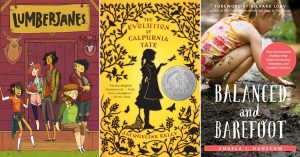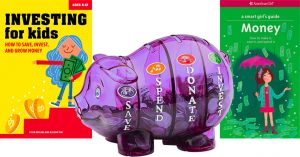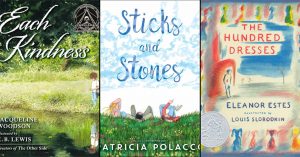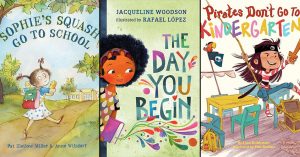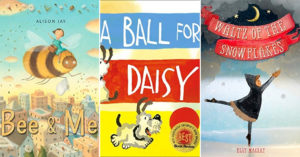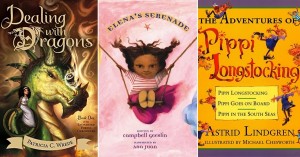By Katherine Handcock, A Mighty Girl Senior Research Intern
Welcome to the first of two articles about resources to help parents teach their Mighty Girls money management skills! Every parent wants their children to learn how to manage money effectively, but many families aren't sure how to go about discussing finances -- especially since few of us grew up in homes where money, spending, saving, and debt were discussed in any detail. However, with a few good resources and a little time, even very young children can start learning about how money works. In our follow-up post, we provide resources for teaching money management skills to older children and teens.
How Money Works
 One early step in learning about money is learning how to recognize different denominations of paper money and coins. A toy like Melissa and Doug's Play Money set, which comes with dozens of pretend bills from $1 to $100 as well as play coins in all US denominations, allows kids to role play the whole process of a purchase: selecting an item, learning a price, recognizing and totaling bills and coins, and making change.
One early step in learning about money is learning how to recognize different denominations of paper money and coins. A toy like Melissa and Doug's Play Money set, which comes with dozens of pretend bills from $1 to $100 as well as play coins in all US denominations, allows kids to role play the whole process of a purchase: selecting an item, learning a price, recognizing and totaling bills and coins, and making change.
At the same time, parents can read books to their kids that involve money being invested, saved, and spent. One good book is Lemonade in Winter by Emily Jenkins, in which Pauline and her younger brother John-John start their first business -- a lemonade stand. The book covers addition, subtraction, sorting, and money recognition, but also more complicated concepts such as investment and return, selling techniques, and entrepreneurship.
Managing Money
As kids get more comfortable with the basics of money, parents can start introducing more real-world situations. Moneywise Kids, a boardgame for two players aged 7 to 12, is a great resource to start this discussion. The game includes two versions of play, and the second version introduces the idea of expenses like food, medical care, and taxes. It even includes unexpected big bills. Parents can use this game to start discussing the sorts of expenses that adults plan for, so that kids start to learn that there is more to money than pleasure spending.
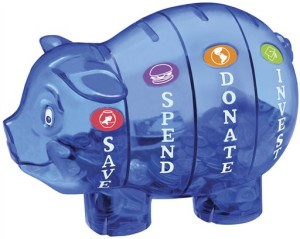 By the early elementary years, many kids will be introduced to -- or request -- an allowance. Once a child has access to their own money, they have to start learning how to manage it by choosing where to spend money, and whether to keep some money for larger goals. Parents should provide guidance for these decisions, and one way to do this is by dividing the allowance -- so much for spending, for saving, for donating, and so on.
By the early elementary years, many kids will be introduced to -- or request -- an allowance. Once a child has access to their own money, they have to start learning how to manage it by choosing where to spend money, and whether to keep some money for larger goals. Parents should provide guidance for these decisions, and one way to do this is by dividing the allowance -- so much for spending, for saving, for donating, and so on.
A divided piggy bank like the Money Savvy Pig is a great way to help kids visualize these categories. It has four compartments that can be emptied separately: Spending, Saving, Donating, and Investing. This also establishes that money for short-term savings goals (for a new toy, a bike, etc.) is handled differently than money for long-term saving or investing. If you want to divide your child’s money in a different way, it’s as simple as getting several jars and labeling them with your chosen categories.
The Value of Saving Money
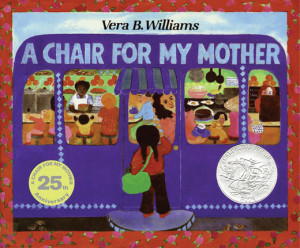 There are a number of good books to start a discussion about saving money, and many of them also show families contributing towards a common goal. In A Chair for My Mother by Vera Williams, a girl and her family save in a variety of ways for an expensive purchase: a soft, comfortable chair for them all to enjoy. Since Rosa, her mother, and her grandmother are saving physical money in a jar, kids can easily understand how a savings goal works: when the jar is full, they can buy their chair.
There are a number of good books to start a discussion about saving money, and many of them also show families contributing towards a common goal. In A Chair for My Mother by Vera Williams, a girl and her family save in a variety of ways for an expensive purchase: a soft, comfortable chair for them all to enjoy. Since Rosa, her mother, and her grandmother are saving physical money in a jar, kids can easily understand how a savings goal works: when the jar is full, they can buy their chair.
Another good book with a similar theme is Pitching in for Eubie by Jerdine Nolen, in which Lily’s older sister has won a scholarship to college and the family needs to earn the remainder of the cost. This book shows how even young children can contribute to family goals, and also emphasizes that post-secondary education is something of great value.
Teaching these skills to your preschooler or elementary-aged child will give them an excellent foundation for their future financial lives. Pre-teens and teens can build on these skills, and we discuss resources for that age group in our article on Money Management Skills for Pre-teens and Teens.
Tips for Teaching Money Management
A few final tips for parents teaching young children about money:
- Let young kids practice making purchase decisions: take them to a dollar store and give them a set budget to spend, or allow them to choose one treat at the grocery store. If they see something else they like, remind them that they can choose that instead, but they have to put back something they have already chosen.
- Teach kids about relative costs. You can do this without using dollar amounts; for example, you might say that a fast-food meal costs the same as cooking three meals at home, or that their swimming lessons at the community pool are half the cost of lessons at a private pool.
- When setting an allowance, be clear about your expectations. Do you require them to set aside amounts for savings, donations, etc.? Is this money solely for pleasure spending, or do you expect them to pay for some of their needs (replacement school supplies, for example)?
- If you require children to divide their allowance, make sure you provide it in a form that makes that possible. A child can’t divide a $5 bill into their jars or divided bank, so make sure that you provide them with quarters and dollars instead of a single bill.
- Consider in advance whether you want to tie allowance to chores; if you do, remember that your child might decide that they don’t want the money enough to do the chore. An alternative if you want to introduce working for money is to pay a “free” allowance but keep a list of extra chores kids can do to earn money towards larger goals.
- Finally, treat money like a tool, not a sign of status or success. Just like using a bigger hammer does not guarantee a better carpentry job, a bigger salary or allowance does not equal happiness -- or financial stability. That is a message that will do them good throughout their lives.
Recommended Resources
- For more books for young children about money management, visit our Money / Entrepreneurship section.
- For more toys and game for teaching money management, visit our Money Management section in Life Skills toys.
- For money management resources for pre-teens and teen, check out part two in our series: A Mighty Girl Spotlight: Teaching Money Management Skills (Pre-teen and Teen).









